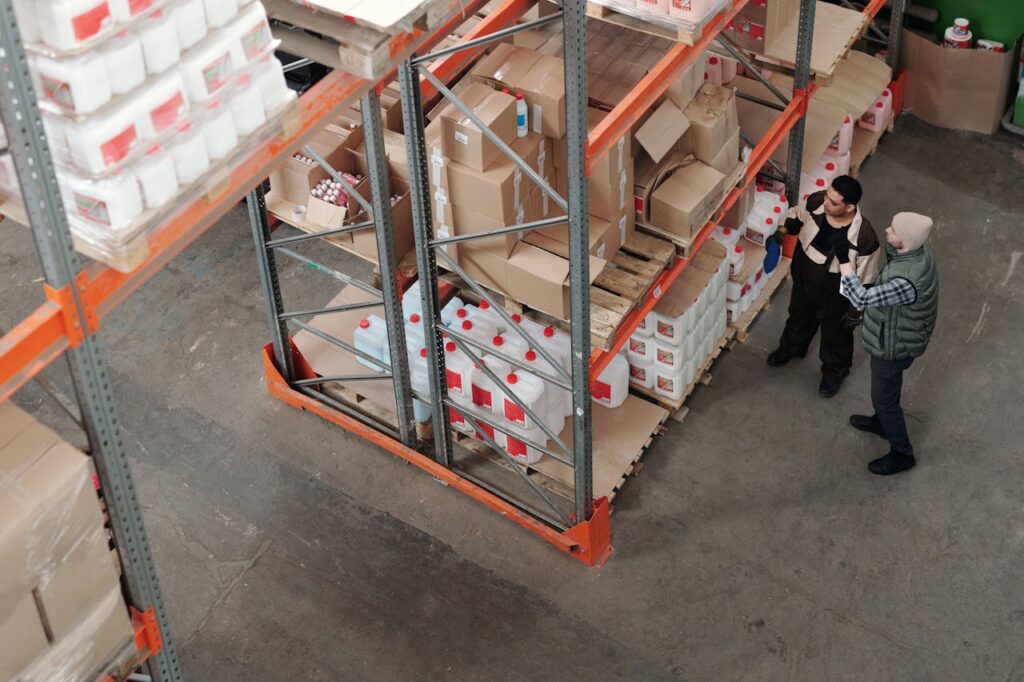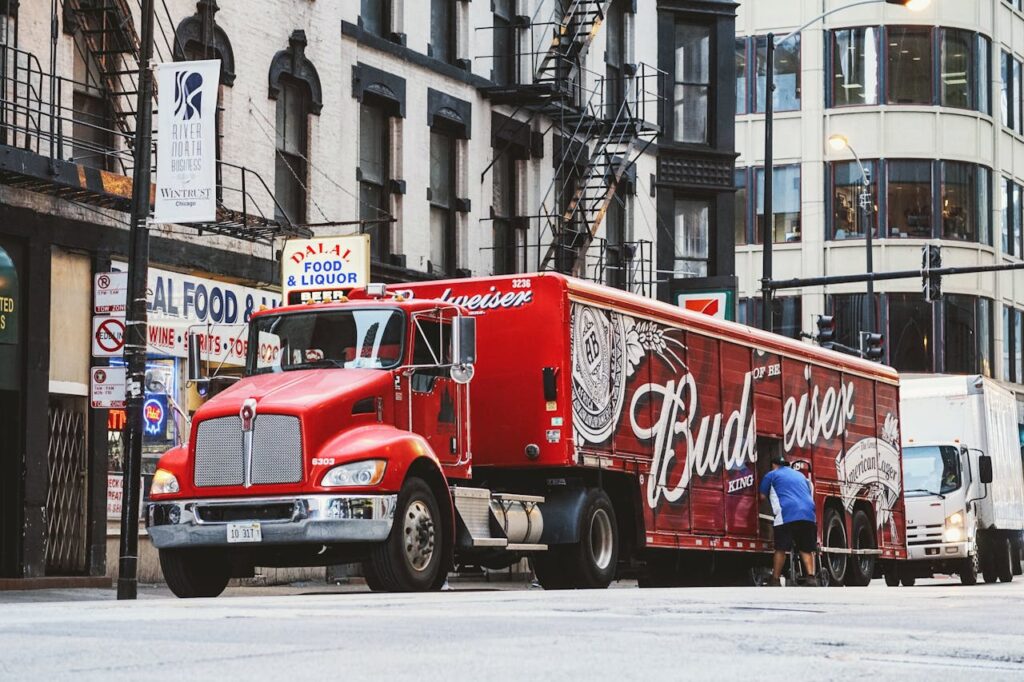McDonald’s recently launched the Big Arch Burger in Canada, making headlines and stirring excitement among Canadians. Priced at $11.99 for the burger only and $16 for the meal, the strategic planning behind such a massive product launch offers valuable lessons for small businesses in Canada. This blog will explore 10 key lessons that small business owners in Canada can take away from McDonald’s Big Arch Burger launch to improve their operations, marketing, financial planning, and customer engagement.
Lesson 1: Strategic Financial Planning

McDonald’s does not launch products based on a whim. Product launches, such as the Big Arch Burger, go through many rounds of planning, development, approval, and financial planning. A lot of time is invested in forecasting cost, updating budgets, and testing various financial scenarios. This ensures that the release of the product is financially viable from inception to release.
Creating a solid and well-rounded budget is crucial to the success of the company’s product release. With a budget, the company can evaluate different aspects that may affect the product release, including expenses related to R&D, marketing, and distribution. With a well-thought-out budget, McDonald’s can set aside money in case of any unexpected events that may happen with the release. The thorough execution allows for McDonald’s to be well-prepared for the release of the Big Arch Burger while maintaining a strong position within the market and profitability.
Takeaway: Canadians can develop a similar approach to financial planning when releasing a new product by doing the following:
- Create Comprehensive Budgets. Before your product launch, ensure you have a detailed budget outlining all potential expenses as well as revenues that are associated with the launch.
- Predict Financial Scenarios. Use forecasting to predict and understand how different scenarios will affect your business. Be sure to run through worst case as well as best case scenarios to understand how different events impact the overall health of your business.
- Allocate and Use Funds Wisely. Allocate funds based on the needs of the business, being sure to prioritize high impact areas such as marketing and product development. At the same time ensure you have money set aside for worst case scenarios.
- Monitor and Adjust. Once the product is launched, continuously monitor your expenses and revenue, be sure to make any adjustments to fit your budget and predicted scenarios. Monitor, adjust and re-evaluate as much as possible.
- Plan for Contingencies. As much as you can be prepared for a product launch, things may not always go as planned. What we may predict to be best-case scenarios may be a worst-case scenario in real life. Having contingency plans and budgets set aside to cover any unexpected hurdles during the product launch will help iron out any surprises without derailing the success of the launch.
By using these tactics, small businesses can be well prepared for a product launch by avoiding pitfalls and setting the stage for success, as done with the release of the Big Arch Burger.
Lesson 2: Cash Flow Management

Cash flow is also another major aspect of any product launch. Before McDonald’s launches a big product, such as the Big Arch Burger, they ensure they are liquid enough to cover all associated costs in order to minimize any financial strains. All aspects of the cash flow are analyzed in order to ensure that it can keep up with the production, marketing and the distribution costs that are associated with the new product launch. This allows them to proceed with the product launch without hurting their financial stability.
Takeaway: For Canadian small business owners, effective cash flow management is crucial for the success of any product launch. Here’s how to implement McDonald’s approach in your own business:
- Develop a Cash Flow Forecast: Create a detailed cash flow forecast that outlines all expected revenues and expenses related to your product launch. This forecast should include costs for production, marketing, distribution, and any other related expenses.
- Monitor Cash Flow Regularly: Keep a close eye on your cash flow by tracking your actual income and expenses against your forecast. Regular monitoring allows you to identify any discrepancies early and make necessary adjustments to stay on track.
- Maintain a Cash Reserve: Set aside a cash reserve to handle unexpected costs or fluctuations in cash flow. This reserve acts as a financial cushion, helping you manage surprises without affecting your launch plans or daily operations.
- Manage Payment Terms: Negotiate favorable payment terms with suppliers and vendors to align with your cash flow needs. For example, seek extended payment terms or favorable credit conditions to ease cash flow pressure during the launch phase.
- Optimize Revenue Collection: Accelerate revenue collection by implementing efficient invoicing and payment systems. Ensure timely billing and follow up on overdue payments to maintain a healthy cash flow.
- Plan for Contingencies: Prepare for potential cash flow disruptions by having contingency plans in place. Identify possible risks, such as supply chain delays or changes in consumer demand, and develop strategies to address them.
By focusing on these cash flow management practices, small business owners can better navigate the financial demands of a product launch, ensuring they have the resources needed to cover all costs and respond to any unforeseen challenges. This proactive approach to cash flow management helps set the stage for a successful product introduction and long-term financial stability, mirroring the strategies employed by McDonald’s during their Big Arch Burger launch.
Lesson 3: Effective Pricing Strategies

There is a method to the madness when it comes to effective price strategies for any product’s release. Before releasing any product like the Big Arch Burger, McDonald’s, go through many cost analysis, competitive pricing scenarios, as well as customer perceptions in order to find The price is also gauged against expenses such as production cost, marketing trends, and what customers are willing to pay in order to ensure profitability.
Takeaway: Canadian small business owners can adopt similar strategies to set effective pricing for their products or services. Here’s how:
- Analyze Costs: Create a prices point that will cover the total cost of producing and delivering your product, including materials, labor, and overhead. Your price should be enough to provide a reasonable profit margin.
- Research Competitors: Study what your competitors are doing in order to come up with an unbeatable price. It may help to pinpoint what is unique about your product in order to price it accordingly.
- Understand Customer Perception: Do you know what your customers are willing to pay? You may have to conduct market research, surveys, or focus groups to find out. Your pricing should be aligned with what customers are willing to pay to attract and retain customers.
- Test Pricing Models: Experiment with different pricing strategies, such as introductory offers, bundling, or tiered pricing, to find the most effective approach. Monitor the impact on sales and customer feedback, then rinse and repeat.
- Adjust Based on Feedback: Be prepared to adjust your pricing based on market response and customer feedback. Flexibility can help optimize pricing and maintain competitiveness.
By applying these pricing strategies, your small business can set prices that attract customers, stay competitive, and ensure profitability, similar to McDonald’s approach with the Big Arch Burger.
Lesson 4: Precise Inventory Management

McDonald’s avoids burning through money by using highly advanced inventory management system to predict demand and optimize stock levels to avoid shortages. The technology allows them to take historic data and predict customer demands in order to have an idea of how much inventory is needed for their product launch. The strategy ensures efficiency and allows them to meet customer expectations without overstocking or running out of products.
Takeaway: Small businesses can improve their inventory management by implementing data-driven forecasting techniques and establishing reliable supply chains. Here’s how:
- Use Historical Data: Small businesses can analyze past sales data to identify trends and patterns that can inform inventory forecasts. What was done in the past should be considered a valuable lesson for the product lunch.
- Implement Inventory Management Software: Inventory management tools are key to automate and mange stock levels, manage orders, and forecast demand. The tools help minimize human errors when it comes to inventory management.
- Establish Reliable Suppliers: A strong relationship with suppliers will ensure product launches go smoothly. Pick trustworthy suppliers that will provide optimal service at the best price for your launch.
- Monitor Inventory Turnover: Regularly review inventory turnover rates to identify slow-moving items and adjust ordering practices. This helps prevent overstocking and reduces holding costs.
- Adjust Based on Sales Data: Use real-time data to continuously analyze and adjust your inventory.
By adopting these inventory management practices, small businesses can enhance operational efficiency, reduce waste, and better meet customer demand, similar to McDonald’s approach with the Big Arch Burger.
Lesson 5: Leveraging Supply Chain Efficiency

Discussion: McDonald’s relies on a well-tested supply chain that provides consistent product quality and timely delivery. Their processes are efficient, from the moment an order is made all the way to it’s delivery. They also foster strong supplier relationships, and use effective logistics to manage global supply chain. This attention to details helps McDonald’s maintain high standards and reduce costs, contributing to the successful launch of products like the Big Arch Burger.
Takeaway: Canadian small businesses can benefit from improving their supply chain efficiency by focusing on the following areas:
- Build Strong Supplier Relationships: Your suppliers are the backbone of your business. Ensure good communication with them in order to foster a good relationship. They greatly affect the success of your product launch.
- Optimize Logistics: Find hole in processes and fix them quickly. This may include transport optimization, managing inventory, and reducing lead times. The end result is a well-oiled logistics machine.
- Implement Supply Chain Technology: Supply chain software will ensure you are in the know how of all steps in the supply chain. Monitoring the progress of supplies will allow for good communication and connection between your suppliers, your team, and your customers.
- Monitor and Evaluate: Regularly review supply chain performance and address any inefficiencies. Analyze metrics such as delivery times, cost per unit, and supplier performance to identify areas for improvement.
- Plan for Disruptions: Have backup up plans to address any issues within the supply chain. This may include using a backup supplier, alternative software, etc, in order to reduce risk.
By enhancing supply chain efficiency, small businesses can reduce costs, improve product quality, and ensure timely delivery, mirroring McDonald’s successful supply chain management.
Lesson 6: Creating Anticipation with Marketing

Regardless of whether you watch tv or not, I’m sure you have seen a commercial for the Big Arch Burger somewhere. McDonald’s uses multichannel marketing campaigns to push their launches worldwide. This means you’ve probably seen their ad on your phone, on your tv, on a billboard, on the radio or anywhere. Unless you live under a rock, you’ve probably seen a commercial for the Big Arch Burger by now. This wide range of media allows the company to effectively interact and get their point across in a way they will understand. That’s right, their marketing campaign is strategically personalized for each audience and media. This creates the right kind of buzz and starts the right kind of conversation prior to, during and after the launch.
Takeaway: Small businesses can leverage similar marketing strategies to create anticipation and drive interest before a product launch. Here’s how:
- Develop a Marketing Plan: Take advantage of all media available to you and create a marketing plan that speaks to your audience in a way they will understand.
- Use Social Media Teasers: Hire influencers or use your own creativity on social media by sharing exclusive content of your launch. This can create excitement and credibility for your product
- Run Pre-Launch Promotions: Great more urgency behind your launch by offering promotions or early access to create urgency and encourage pre-orders. Use contests or giveaways to increase engagement and attract attention.
- Track and Analyze Results: As with any step outlined in this blog, monitor the success of your marketing strategy, go back to tweak any undesired result, rinse, then repeat.
By implementing these marketing strategies, small businesses can effectively build anticipation and drive interest in their product launches, similar to McDonald’s approach with the Big Arch Burger.
Lesson 7: Localizing Your Marketing Efforts

The Big Arch Burger was released in Canada therefore McDonald’s customized its campaign to best fit the preferences and values of Canadians. This strategy makes for an effective marketing campaign as the target audience is better receptive to it and more likely to respond favourably.
Takeaway: Small businesses can enhance their marketing effectiveness by localizing their efforts to better connect with their target audience. Here’s how:
- Understand Local Preferences: Research and understand what make your audience who they are. A buyer’s persona may be effective here. Tailor your marketing messages and promotions to reflect these insights.
- Customize Messaging: Certain people will want to hear certain things about your product. For example older people would more likely want to hear how a product may enhance their safety while a younger audience may want to hear how they can have fun with a product. Master your marketing messaging and tailor it to your local consumers.
- Engage with the Community: Build relationships with your community by taking part in events and collaborations.
- Monitor Local Trends: Stay informed about local market trends and adjust your marketing strategies accordingly. This helps ensure that your promotions remain relevant and effective.
- Gather Local Feedback: Be open minded to Collect feedback and act on it based on your customer’s preference. Use this feedback to tweak your products in order to satisfy their needs.
By localizing marketing efforts, small businesses can create more meaningful connections with their target audience, drive engagement, and increase the success of their product launches, similar to McDonald’s approach in Canada.
Lesson 8: Monitoring Customer Feedback

It’s not enough to just launch a new product. You also have to monitor the buzz going on around your products. Collecting feedback is one of the most important ways in which to analyze the success of your product, make changes to it, and put it back into the market. McDonald’s is actively collecting feedback from your customers regarding overall satisfaction, improvements, and add-ons to your big arch burger. They do this using a variety of channels including social media surveys as well as reviews. This feedback allows them to address any issues that may arise with your product launch, fix those issues, and then relaunch the product.
Takeaway: Small business owners can use customer feedback to improve their products or services and enhance customer retention. Here’s how:
- Implement Feedback Channels: Once your product is launched, implement channels in which customers can provide feedback on your product. This can include social media interactions, surveys, or group studies that allows customers to share their experience and thoughts on your product.
- Analyze Feedback Trends: Be open-minded about the feedback and suggestions that you receive. Use the information to make adjustments to your product in order to make it better.
- Respond to Customer Concerns: Address any issues that you have with your product immediately. Be committed to improving customer satisfaction in order to cultivate customer loyalty.
- Make Data-Driven Adjustments: Use feedback as a metric for the overall success of your product. This means that making changes based on customer satisfaction, can allow you to make better decisions on the improvement of your product.
- Communicate Improvements: If change is needed for your product, ensure it is communicated effectively. This may include addressing what the problem was, how the problem was resolved, and things that are being done to mitigate that problem in the future.
By effectively monitoring and responding to customer feedback, small businesses can enhance their offerings, improve customer satisfaction, and foster long-term loyalty, mirroring McDonald’s approach.
Lesson 9: Building Brand Loyalty

McDonald’s has a loyal following because they are able to build a consistently strong Branding and rewards program. These alone are able to retain customers for the long term We build everlasting relationships.
Takeaway: Canadian small businesses can invest in customer retention strategies to build brand loyalty and maintain lasting relationships with their customers. Here’s how:
- Ensure Consistent Quality: Building consistent products is key to ensuring product or customer trust and loyalty. If your products are known for having something that resonates well with your customer, ensure it is transferred into new products.
- Develop a Loyalty Program: Implement a loyalty program to reward repeat customers and encourage continued business. Offer incentives such as discounts, exclusive offers, or points-based rewards.
- Personalize Customer Interactions: Use customer data to personalize interactions and offers. Tailor communications and promotions to individual preferences to enhance the customer experience.
- Provide Excellent Customer Service: Offer exceptional customer service to build strong relationships and address any issues promptly. Positive service experiences contribute to customer loyalty and satisfaction.
- Engage with Your Audience: Foster engagement through regular communication, social media interactions, and community involvement. Building a connection with customers helps strengthen brand loyalty.
By focusing on these strategies, small businesses can build and maintain strong brand loyalty, ensuring long-term success and customer retention, similar to McDonald’s approach.
Lesson 10: Measuring Success Through Key Performance Indicators (KPIs)

McDonald’s tracks every initial production that comes into launching a new product. They use key metrics or KPIs such as sales figures, customer feedback, and profitability metrics. The data presented from these metrics give a broad overview as well as a detailed insight on the performance of each new product launch. This allows them to assess what worked well with the product launch or identify what needs to be improved.
Takeaway: Small business owners should set and monitor KPIs to measure the success of their product launches and make data-driven decisions. Here’s how:
- Identify Relevant KPIs: Determine which KPIs are most relevant to your product launch. This could be sales revenue, customer acquisition rates, and profit margins. Only pick those that align with your product goals
- Track Performance: Review, analyze and track data from your KPI in order to make an informed decision about improvements to your product.
- Set Benchmarks: Use benchmark to help you gauge performance against industry standards or past performance. This helps set realistic goals and measure progress effectively.
- Make Data-Driven Decisions: Use KPI data to inform decisions about product adjustments, marketing strategies, and future launches. Data-driven insights can guide improvements and optimize performance.
- Communicate Results: Share KPI results with your team and stakeholders to keep everyone informed about the launch’s performance. Transparency helps align efforts and drive continuous improvement.
By effectively measuring and analyzing KPIs, small businesses can gain valuable insights into their product launches, make informed decisions, and drive ongoing success, similar to McDonald’s approach with the Big Arch Burger.
Summary of Key Lessons
Small businesses can learn many lessons from McDonald’s Big Arch Burger launch. This launch emphasizes the need for adequate planning before every new product launch. By understanding the different components that go into a product launch, including research and development, supply chain and logistics management, effective marketing, inventory management, and customer satisfaction, you too can have similar success as McDonald’s. McDonald’s ability to plan for the future and respond to market demands, emphasizes the importance of flexible foresight in business operations.
Originally posted 2024-08-31 15:11:32.


